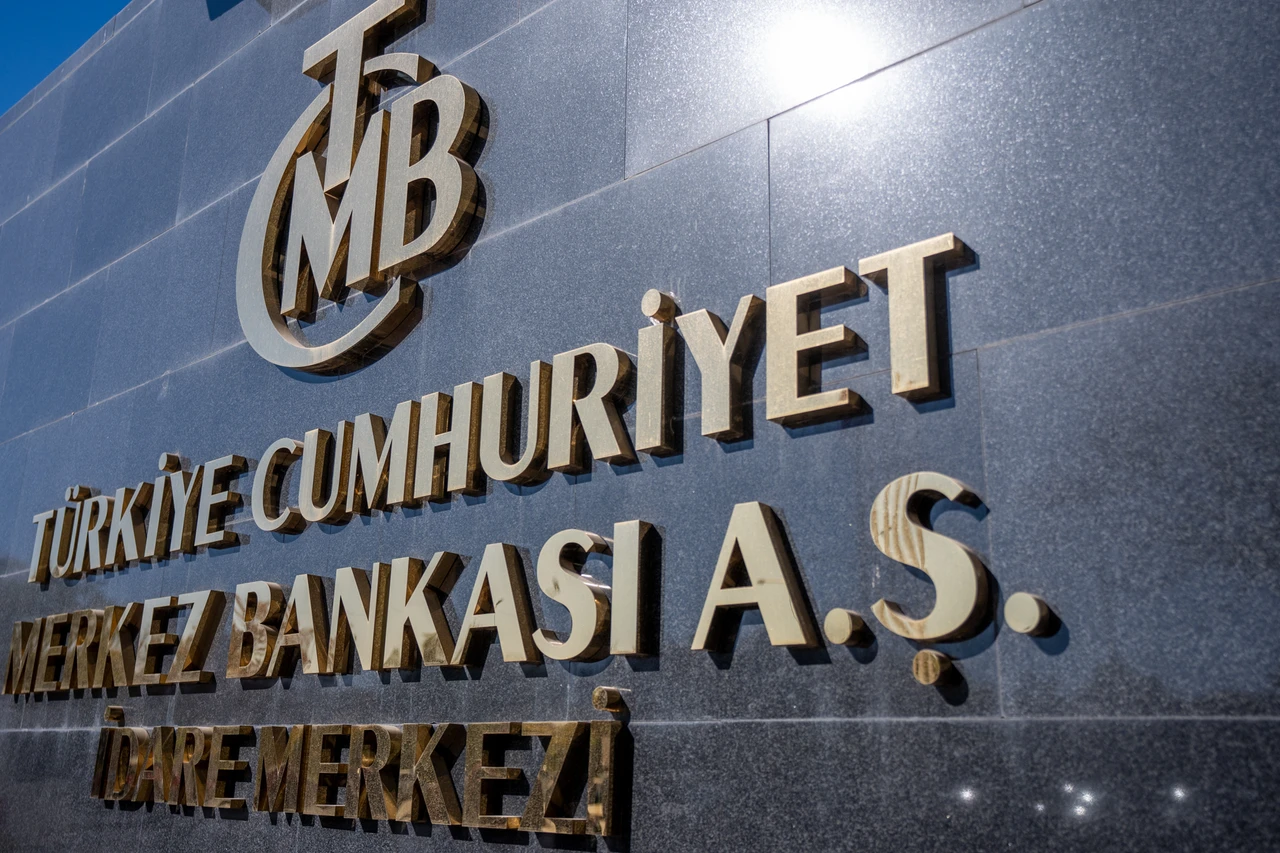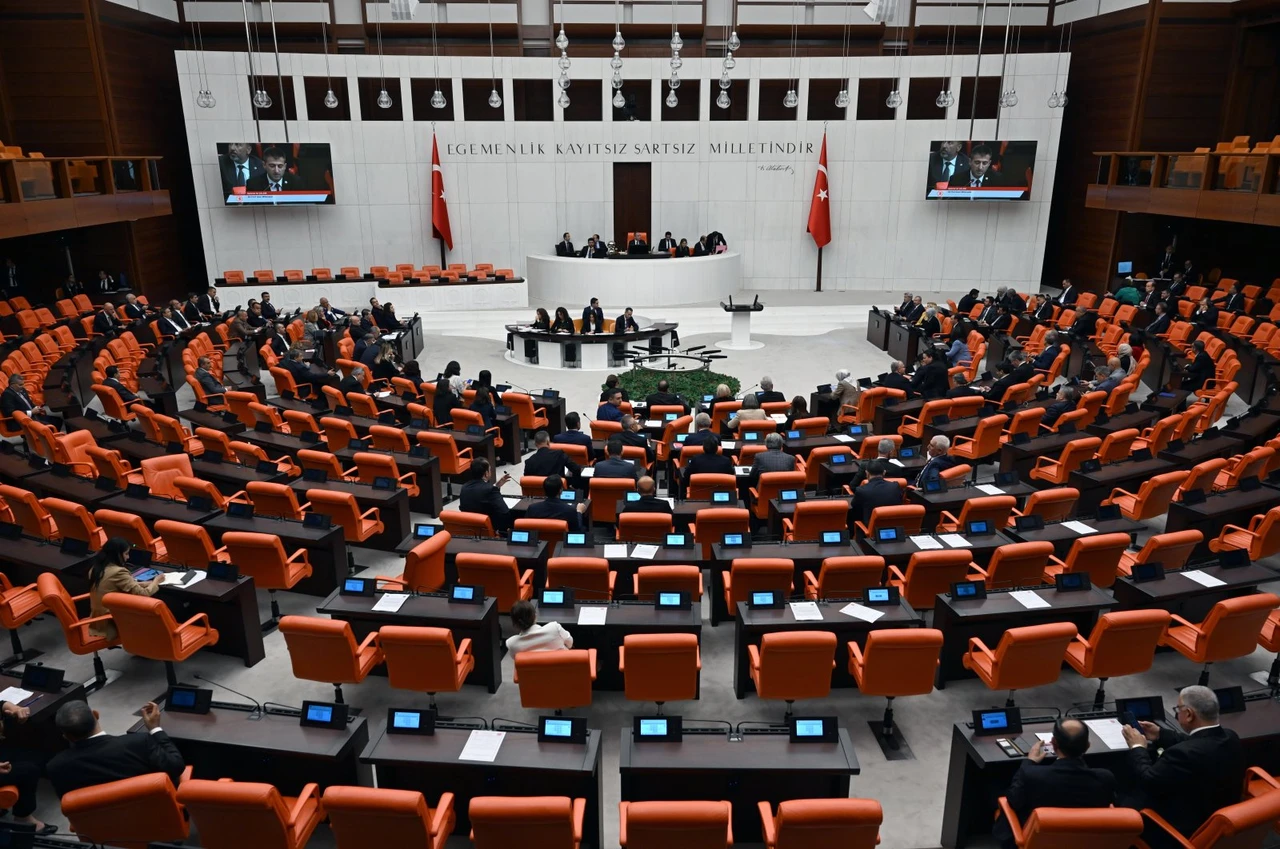Türkiye sets 2025 inflation target at 24%, aims for single-digit inflation by 2027
 Emblem of Turkish Central Bank can be seen at its headquarters, in Ankara, Türkiye, Nov. 8, 2024. (AA Photo)
Emblem of Turkish Central Bank can be seen at its headquarters, in Ankara, Türkiye, Nov. 8, 2024. (AA Photo)
In a closely watched presentation of Türkiye’s first inflation report of 2025, Turkish central bank governor Fatih Karahan announced a significant revision to the country’s inflation forecasts while emphasizing the bank’s commitment to maintaining tight monetary policy until price stability is achieved.
The central bank raised its end-2025 inflation forecast to 24% from the previous target of 21%, though Karahan was quick to emphasize that this adjustment does not signal any relaxation in the bank’s hawkish monetary stance. The bank maintained its 2026 inflation target at 12% and introduced a new 2027 target of 8%, mapping out a gradual path toward its medium-term objective of 5% inflation.
“Our disinflation process continues, and macroeconomic indicators are progressing in alignment with this trajectory,” Karahan said during Wednesday’s presentation. “We assess that domestic demand has reached levels that support the decline in inflation, and the core inflation trend is on a downward path.”
Central bank explains why Turkish inflation exceeded 2024 target
In a mandatory letter to the government explaining why inflation significantly exceeded its 2024 target, the central bank detailed how consumer prices were heavily influenced by backward indexation behavior throughout the year. Despite inflation expectations showing a downward trend during 2024, they remained stubbornly high, complicating the bank’s efforts to achieve its targets.

The letter highlighted that while demand conditions contributed to upward price pressures in the first half of 2024, they began supporting disinflation from the third quarter onward. The real appreciation of the Turkish lira also helped temper inflation during this period.
Central bank policy actions and future trajectory
The central bank’s monetary policy committee has implemented 500 basis points of cuts since December, bringing the key interest rate to 45%. These decisions were based on what Karahan described as improvements in inflation’s core trend and pricing behavior, though he stressed that the bank remains vigilant.
“The upward revision in our forecasts should not be interpreted as a shift in our policy stance or as a signal of additional monetary easing,” Karahan emphasized. “January inflation came in line with our expectations.”
Persistent challenges in service sector
A key area of concern remains service sector inflation, particularly in housing rentals. While showing some signs of moderation, rental inflation remains elevated, with Karahan noting that January’s monthly increase was primarily driven by higher contract renewal rates.
“We observe that rental inflation, while still high, is on a decelerating trend,” Karahan said. “The January increase in monthly rental inflation stems from a rise in contract renewal rates.”
Strategic policy initiatives
In a significant policy announcement, the central bank revealed plans to phase out the KKM foreign currency-protected deposit scheme during the year, beginning with corporate accounts. This initiative aligns with broader efforts to strengthen the Turkish lira and encourage lira-denominated savings.
The bank’s forward guidance suggests inflation will likely slow again in the second quarter after a temporary rise in the first quarter. Officials maintain that the current tight monetary stance, supported by macroprudential measures, will continue to facilitate the disinflation process.
Central bank maps 3-year inflation trajectory
The central bank’s latest projections indicate inflation will fall within a range of 19% to 29% by the end of 2025, with a 70% probability. For 2026, the forecast range is 6% to 18%, with a midpoint of 12%, while 2027’s projection spans from 2% to 14%, centered at 8%.
The bank acknowledged several risk factors that could impact these projections, including:
- Persistent stickiness in service sector inflation
- Food and commodity price volatility
- Geopolitical developments
- Uncertainties in global economic and trade policies
“We will maintain our tight monetary stance until we achieve a permanent decline in inflation and price stability,” Karahan affirmed. “Our policy rate will be determined in a way that ensures the necessary tightness for the projected disinflation process, taking into account inflation realizations, trends, and expectations.”



